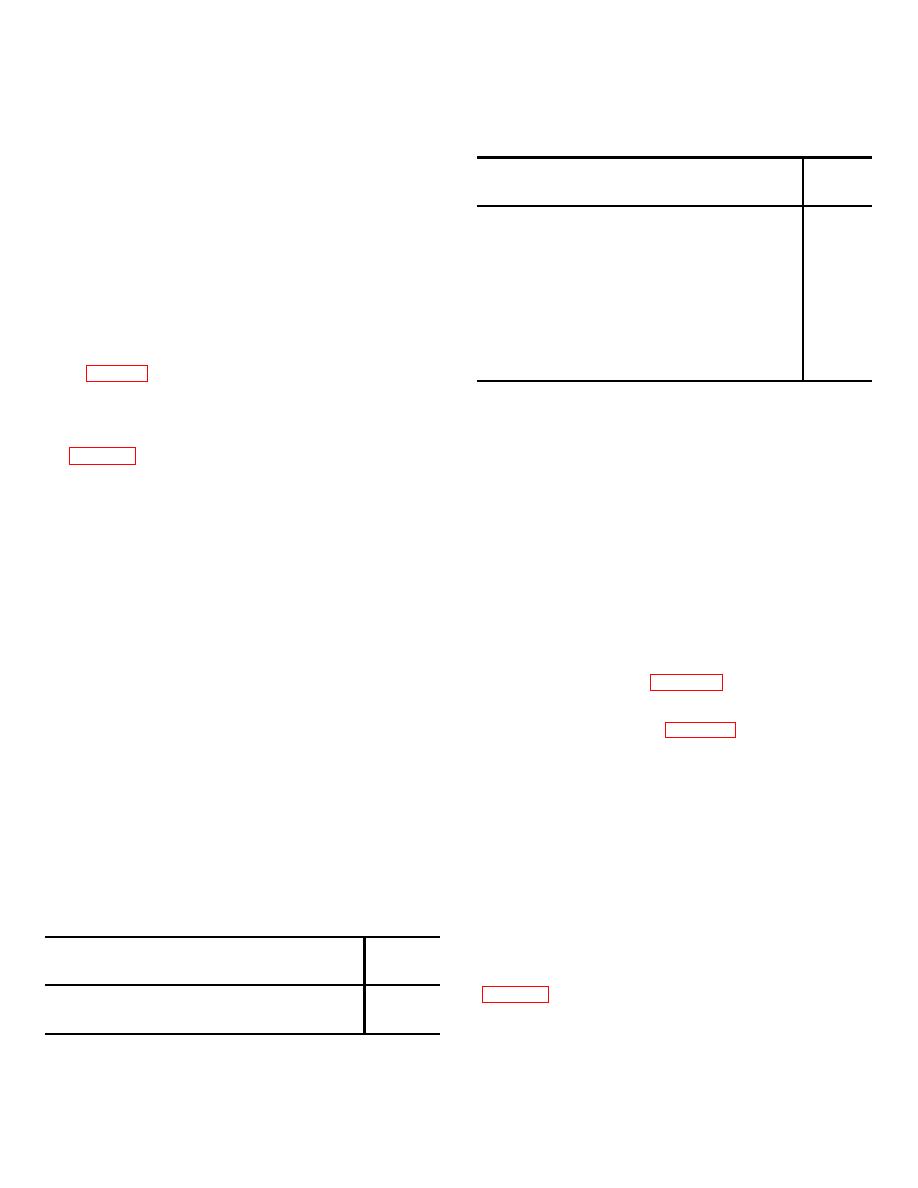 |
|||
|
|
|||
|
Page Title:
Table 6-3. Hydrostatic Test Interval for Extinguishers |
|
||
| ||||||||||
|
|
 TM 38-400/NAVSUP PUB 572/AFMAN 23-210 MCO 4450.14/DLAM 4145.12
Table 6-3. Hydrostatic Test Interval for
(3) Pails or drums of powder-extinguishing
Extinguishers. (Continued)
agents for scoop or shovel application to metal fires will
be kept full at all times.
Test in-
(4) Each extinguisher will have a durable tag
Extinguisher type
terval
securely attached to show the maintenance or recharge
year
date and the initials or signature of the person who
performs this service.
Wetting agent ................................ ........................
5
Foam................................ ................................ .....
5
d. Hydrostatic tests.
Loaded stream................................ .......................
5
Dry chemical extinguishers with stainless steel .......
(1) If, at any time, an extinguisher shows
shells or soldered-brass shells ...............................
5
evidence of corrosion or mechanical injury, it will be
Carbon dioxide extinguishers ................................ .
5
subjected to a hydrostatic pressure test or replaced.
Dry chemical extinguishers with brazed brass ........
(2) For
the
condition
of
shells, mild steel shell, or aluminum shells .............
12
extinguisher cylinders made to DOT specifications (49
Bromotrifluoromethane ................................ ..........
12
CFR, chap 1), see the Standard for Visual Inspection of
Dry powder extinguishers for metal fires.................
12
Compressed Gas Cylinders (CGA C-6), published by the
Compressed Gas Association, 500 Fifth Avenue, New
NOTE
York, NY 10036.
Cylinders under jurisdiction of DOT may
require hydrostatic testing at more frequent
(3) At intervals not exceeding those specified
periods.
in table 6-3 and (4) of this subparagraph, extinguishers
will be hydrostatically tested. The first hydrostatic retest
may be conducted between the fifth and sixth years for
(8) The hydrostatic test date will be recorded
those with a designated test interval of 5 years.
on a record tag of metal or equally durable material, or a
suitable metallized decal which will be affixed (by a
(4) Nitrogen cylinders (or other cylinders used
heatless process) to the shell of an extinguisher which
for insert-gas storage) such as found on wheeled
favorably passes the hydrostatic test. The record tag
extinguishers will be tested at a 5-year interval.
will contain the following information: date of test, test
(5) On those extinguishers, which are
pressure, and name or initials of person or agency
equipped with a shutoff nozzle at the outlet end of the
making the test.
hose, a hydrostatic test will be performed on the hose
(9) For extinguishers subjected to an original
with its couplings (but without the discharge nozzle) at
factory test pressure of 350 psi or greater, the test
the test interval specified for the unit on which the hose
pressure will be 75 percent of the factory test pressure
is installed.
(as noted on the extinguisher nameplate), but in no case
(6) The test pressure for dry chemical and dry
less than 300 psi (see table 6-4). For extinguishers
powder hose assemblies requiring a hydrostatic test will
subjected to an original factory test pressure of less than
be at a test pressure of 300 psi for a 1minute period.
350 psi, the test pressure will be 75 percent of the
Carbon dioxide hose assemblies requiring a hydrostatic
factory test pressure (see table 6-4). Pressure will be
test will be at test pressure of 1,250 psi for a 1-minute
applied at a rate of rise to reach the test pressure in
period.
approximately 1 minute, and the pressure will held for 1
(7) Hydrostatic tests are not required on fire
minute, after which it will be released.
pails, pump-type water or antifreeze extinguishers, and
(10) Carbon dioxide extinguishers, nitrogen
factory-sealed disposable (nonrefillable) containers. If
cylinders, and other cylinders or cartridges used for the
such an extinguisher or water pail shows evidence of
storage of inert, compressed gases will be
corrosion or mechanical injury, it may be unsafe or
hydrostatically tested in accordance with the
unsuitable for further use and will be replaced with a
requirements of DOT (see 49 CFR, parts 171-190).
new unit.
(11) Extinguisher
shells,
cartridges,
or
cylinders which show leakage or permanent distortion in
Table 6-3. Hydrostatic Test Interval for
excess of specified limits, or which rupture, will be
Extinguishers.
removed from service.
Test in-
Extinguisher type
terval
e. Characteristics of fire extinguishers.
The
year
characteristics of fire extinguishers are summarized in
with the various types of extinguishers in use. The table
Cartridge-operated water or antifreeze..................
5
may also be used as an aid in selecting fire
Stored-pressure water or antifreeze......................
5
extinguishers.
6-9
|
|
Privacy Statement - Press Release - Copyright Information. - Contact Us |